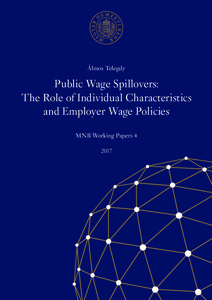Public wage spillovers: the role of individual characteristics and employer wage policies

Magyar Nemzeti Bank, Budapest ; Telegdy, Almos
Magyar Nemzeti Bank - Budapest
2017
36 p.
public sector ; wage increase ; wage policy
MNB Working Papers
2017/4
Wages and wage payment systems
English
Bibliogr.
"Using a large and unexpected public wage increase in Hungary which changed the public wage premium in 2002 from -17 to +7.5 percent from one month to the next, I study wage spillovers from the public to the corporate sector. I proxy the exposure of corporate workers to the public sector with the variation of the share of public sector employment within labor market segments defined by gender, experience, occupation and region. Controlling for worker-firm joint fixed effects, the analysis finds that the public wage increase induced a 1.4 percentage points wage differential between two workers situated at the 25th and the 75th percentile of the exposure measure, which corresponds to an elasticity of 0.42. The firm's exposure to the public sector (measured as the average of individual exposures of the firm's workforce) produces twice as high wage effects and a corresponding elasticity of 0.96. The spillover affected primarily the wages of males, young workers and the highly educated. The analysis also finds that employers raised the wages of incumbent, rather than, newly hired employees, and that bonuses increased more than regular wages."
Digital
The ETUI is co-funded by the European Union. Views and opinions expressed are however those of the author(s) only and do not necessarily reflect those of the European Union or the ETUI.